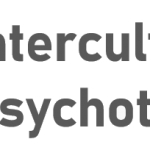Theraplay Therapy
- Home
- Therapies
- Theraplay Therapy
What is Theraplay Therapy?

Theraplay is a specific type of therapeutic approach in the mental health field. Though Theraplay may be used for adults, it is a psychotherapeutic approach most commonly used for children. Possibly one of the most rewarding and enjoyable therapeutic techniques, this type of therapy involves few rules or limits during actual playtime with the child or adolescent.
The Association for Play Therapy (APT), the official authority on this branch of therapy, states “Child Theraplay is a way of being with the child that honors their unique developmental level and looks for ways of helping in the ‘language’ of the child – play. Licensed mental health professionals therapeutically use play to help their clients, most often children ages three to 12 years, to better express themselves and resolve their problems.”
Theraplay involves few rules or limits for the child. How long are the sessions? Most commonly they are about 30-50 minutes long. As opposed to a lot of discussions or verbal interaction, Theraplay simply involves play, in the hope that a child will feel free to both explore their lives and express their thoughts and emotions through toys, art, etc. The overall goal of Theraplay is to teach children (or help them learn) to express themselves and their emotions in healthy ways, learn how to demonstrate respect and empathy, and discover new, healthier ways to solve encountered problems
Who should receive Theraplay Therapy?
Though Theraplay can be used for any age, it is more commonly used for the younger demographic referenced by the age (3-12 years). It can also be helpful for therapy with developmentally delayed or challenged clients (regardless of age).
Children who likely benefit most from Theraplay usually struggle with one of the following challenges:
- behavioral problems
- disorders
- developmental delay.
It may also be used as an initial approach by a therapist, usually at a first appointment in order to establish comfort and trust with the client. In some circumstances, Theraplay may also be used for children after a suspected or confirmed trauma.
Types of Theraplay Therapy
Theraplay comes in many forms and is often dictated by the needs or preferences of the child. Our Theraplay therapists use a wide range of toys, techniques, and activities to engage with their young patients, and may pivot their methods depending on the specific qualities of the child. In general, most Theraplay sessions last between half an hour to an hour, and involve some sort of imaginative playtime or storytelling.
A Theraplay therapist may help direct the play by gently guiding or instructing the child towards a specific goal, or may allow for free play. In some cases, the therapist may join in on the game or playtime, while in other cases the therapist may act as a passive (and supportive) observer. Regardless, the most important aspect of Theraplay is a sense of comfort and safety, since children will be most honest when they feel fully supported and free to be themselves.
- Storytelling
- Role-playing; Puppets and plays
- Playing with toys like dolls, and stuffed animals
- Arts and crafts
- Putty and Sculpting Clay
- Water play
- Sand play
- Drawing and Coloring Setups
- Cards
- Kitchen Play
Some parents or caregivers may find themselves asking ‘How can I be trained in Theraplay?’ You actually can! Multicultural Psychotherapy is available to teach caregivers (usually parents) basic child-centered Theraplay techniques. These skills can then be used at home.
Why Theraplay Therapy works
If you have ever tried to get a straight answer out of a middle schooler or tried to follow the narrative of a story being told by a toddler, you might already know that kids are still developing verbal communication skills. Of course, that isn’t their fault, childhood is all about developing those key communication skills, so it’s normal for most kids to struggle with some aspect of communication. In particular, many kids have a hard time describing their feelings, and in some cases, identifying them.
Theraplay is a therapy technique used to help children express themselves, develop important skills, and process trauma in a healthy, productive environment. Whether aware of it or not, kids express their innermost thoughts and feelings through their play. When watched by a trained professional, the way a kid plays can help to reveal struggles at home, mental health problems, traumatic events, and more.

